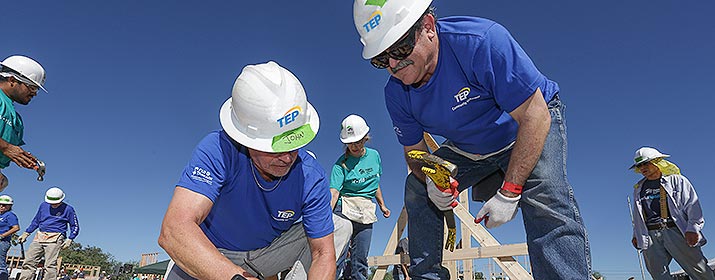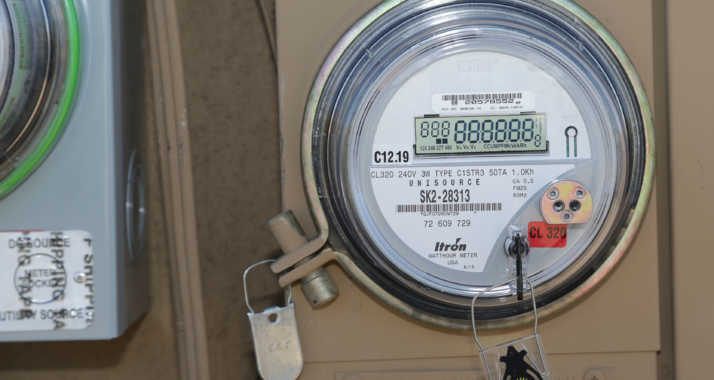
Tucson Electric Power has committed to continuing its 25-year tradition of helping Habitat for Humanity Tucson build and repair homes for limited-income residents with a new three-year pledge of financial and volunteer support.
“Since 1995, TEP has supported Habitat for Humanity’s efforts to provide safe and affordable housing to help families transition out of poverty,” said Wendy Erica Werden, TEP’s Manager of Community Investment and Philanthropy. “Habitat Tucson also was the first nonprofit agency to include energy-efficiency features – such as LED bulbs, low-flow faucets and solar water heaters — in their homes to keep energy costs as low as possible.”
Over the next three years, TEP will contribute $50,000 annually to Habitat Tucson and encourage employee volunteers to help build several homes and complete home repairs. TEP’s contributions are funded with corporate resources, not customers’ rates.
The Carters Court building project on Oct. 11 is just one of many that TEP will support. Two dozen TEP employees will join 300 other volunteers that day to help raise the walls of six new homes in a 19-home housing development in the Flowing Wells neighborhood near W. Diamond St. and N. Davis Ave.
The build project coincides with World Habitat Day 2019, an international day of action that raises awareness of global efforts to provide housing for underserved populations.
By investing in an affordable housing development and home repair projects in the Flowing Wells area, Habitat Tucson hopes to provide a more stable and high quality of life for residents and revitalize the neighborhood.
TEP volunteers participated in two other Habitat Tucson building projects earlier this year.
“We are incredibly grateful for this three-year partnership with TEP,” said T. VanHook, Habitat Tucson’s Executive Director. “TEP’s funding is being used to increase volunteer engagement through the ‘TEP-Habitat Power of Volunteers’ program. By harnessing the power of our volunteers, we’re helping more families build strength, stability and self-reliance through shelter.”






